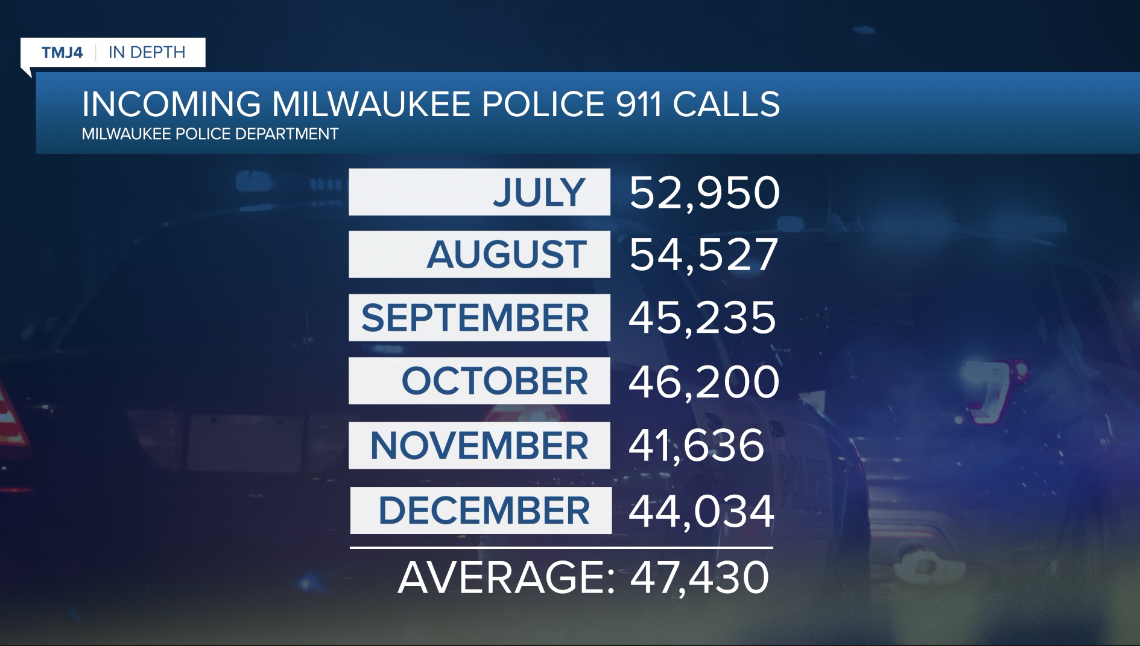MILWAUKEE — New technology is helping the Milwaukee Police Department (MPD) make dramatic improvements in 911 call answer times, but police data shows it’s taking longer, on average, for officers to respond to calls for service.
Every 911 call placed in the City of Milwaukee is answered at police District 3 on the north-side. More than a year after a new 911 system was put into place, employees are answering calls much quicker and leaving far fewer callers on hold.
Inside MPD’s 911 communications center, dozens of workers called "telecommunicators" are assigned to one important duty. They answer a staggering number of 911 calls each day. MPD data shows about 50,000 911 calls are made each month.

Captain Michele Haywood knows the stakes often couldn’t be higher on the other end of the line.
“It could be a matter of life and death,” she said.
911 systems were originally designed for landlines, but now that a majority of people use cell phones, police departments across the country are upgrading to what’s called Next Generation 911 technology. The system Milwaukee purchased in the spring of 2021 immediately brings a cell phone caller’s location up on a telecommunicator’s computer.
Captain Haywood says it allows telecommunicators to spend less time taking down information from callers. Ultimately, it’s supposed to shave off critical seconds in officer response times.
“They get more accurate information, especially as it pertains to the cell phone towers and the caller’s information of where they’re possibly located at to get them the service that they need quicker,” she said.
The National Emergency Number Association sets standards for police departments to meet. The main criteria is 95 percent of 911 calls “should” be answered within 20 seconds.
MPD data shows that was met just 66 percent of the time last July. Records show MPD has gradually made progress as it adjusts to the new system. In February, 90 percent of calls were answered within that time frame.

“We have two distinct roles here,” Captain Haywood said.
Captain Haywood says once the telecommunicators gather information directly from 911 callers, it’s entered into a system that immediately goes to dispatchers who talk to officers at the nearest police district.
However, new MPD data shows it’s taking officers 70 seconds longer on average to respond to those calls for service than it did last year when 911 call answer times weren’t as quick.
“Obviously, we have had members leaving the department through attrition and we have had to replace them so at times there are less staff on the floor, so that has an effect on it,” Captain Haywood explained.
Police say the average on-scene response for a 911 call takes 18 minutes and 21 seconds this year in Milwaukee. The highest priority calls, which include critical incidents, take an average of 4 minutes and 44 seconds for officers to arrive. Captain Haywood says the next priority category includes life threatening incidents. Data shows those are taking roughly 10 minutes and 32 seconds for police to make it on-scene.
“We’re doing everything that we can,” Captain Haywood said. “Obviously, we are making sure as far as the telecommunicators and the dispatchers here are getting the calls out in a timely manner and we’re also monitoring the calls for service, not only just for one particular district but citywide.”
MPD says it isn’t just fewer sworn officers creating a delay in response times. The department says an increase in crime and demands for police services is also a big factor.




